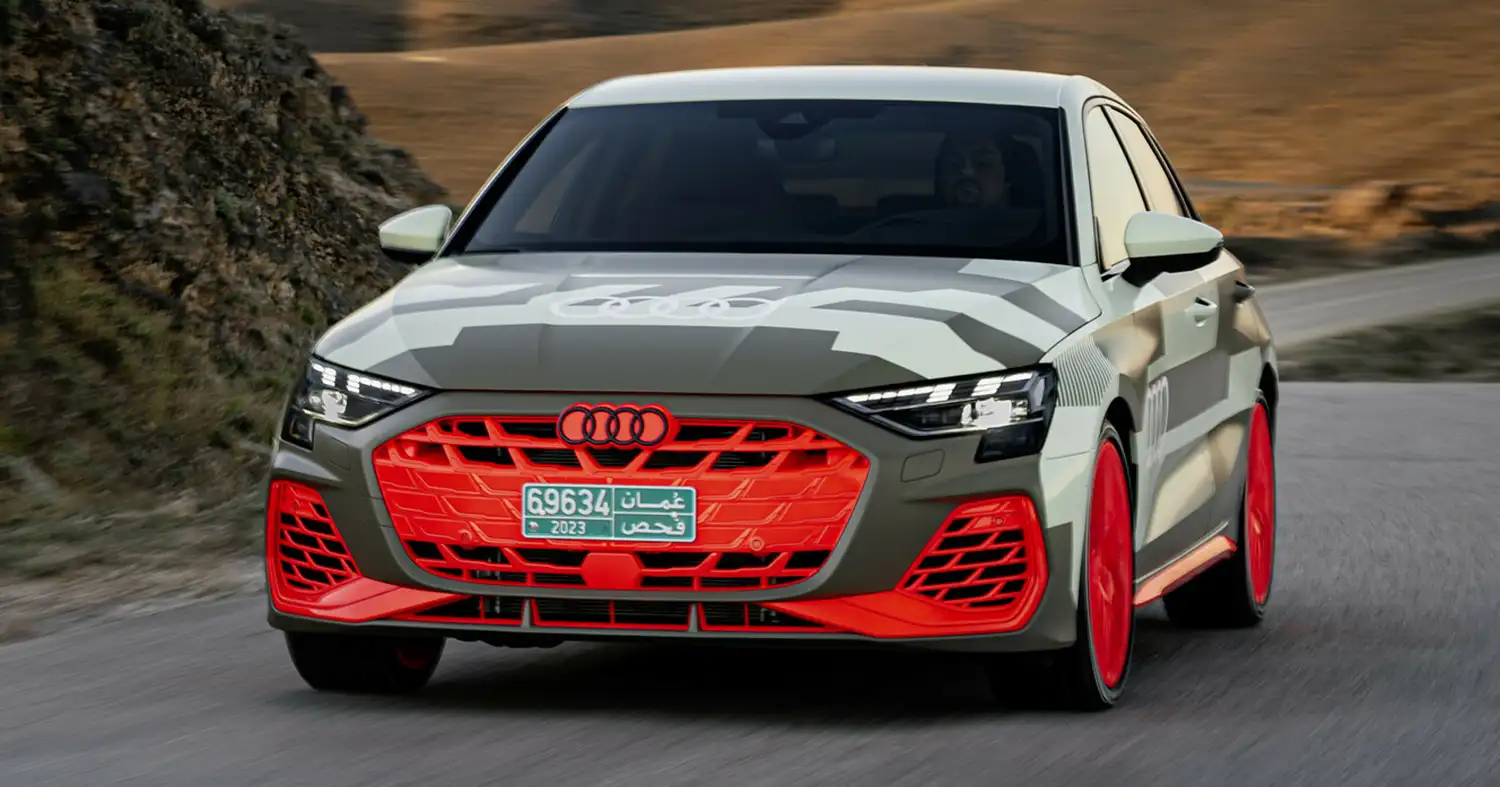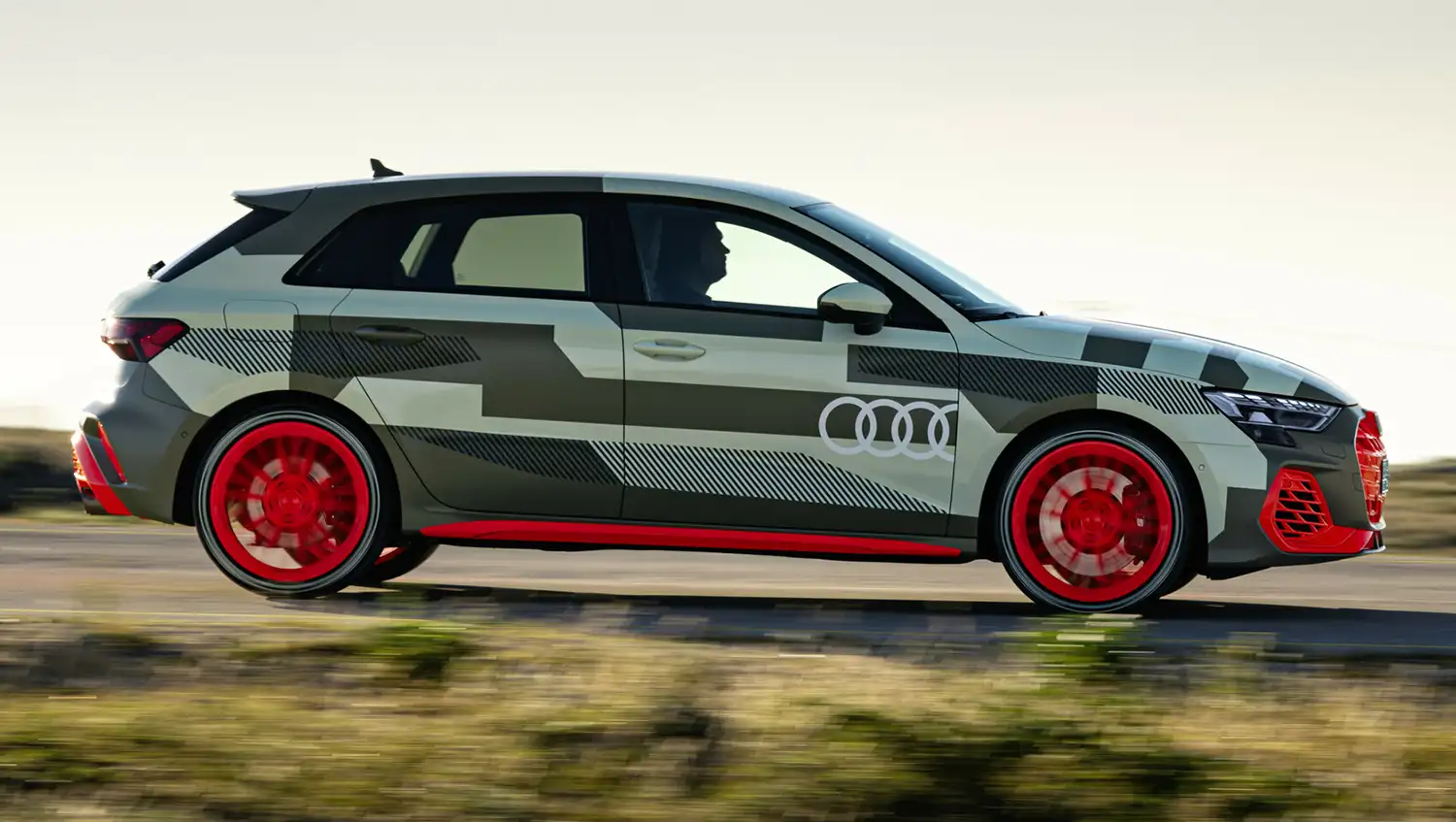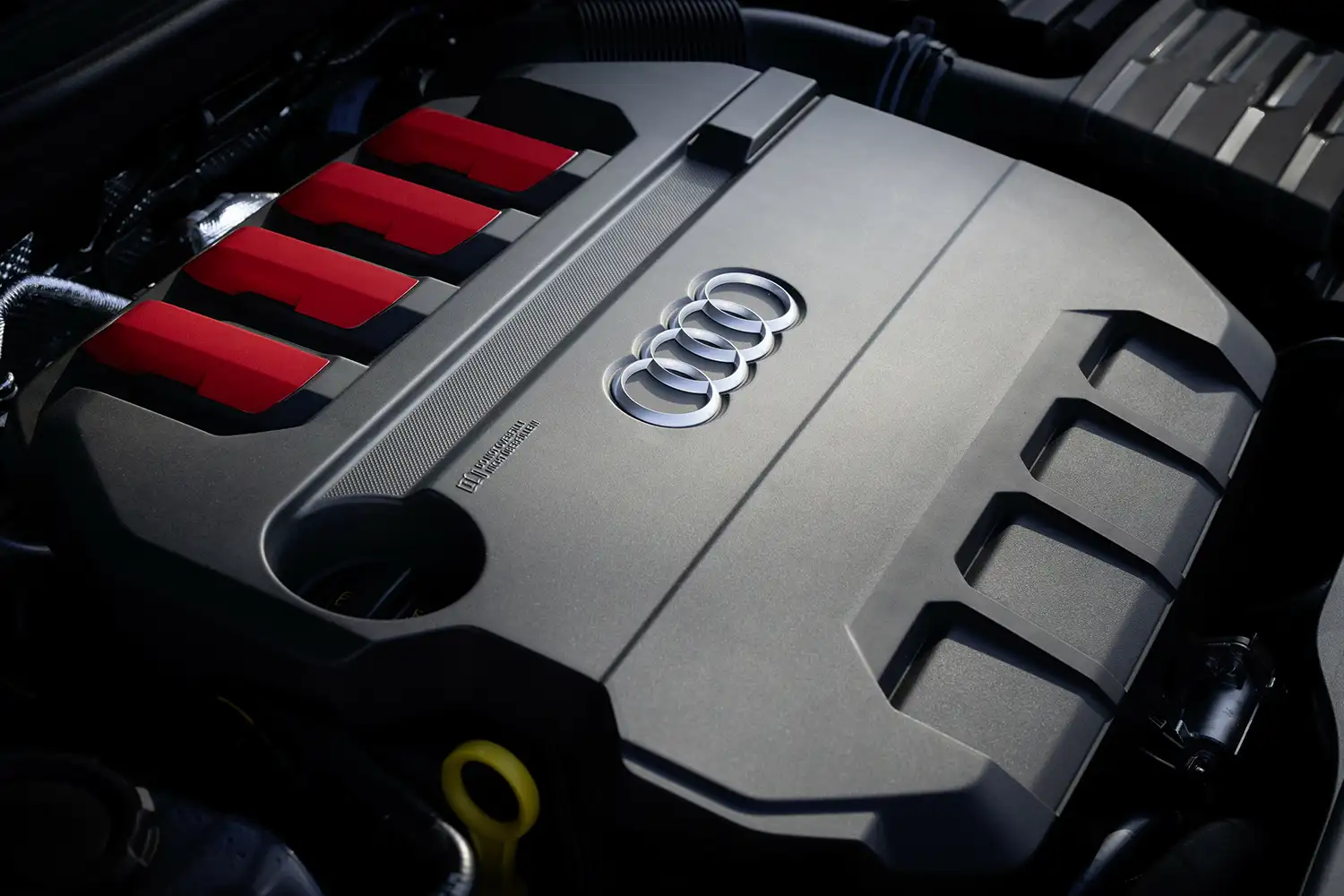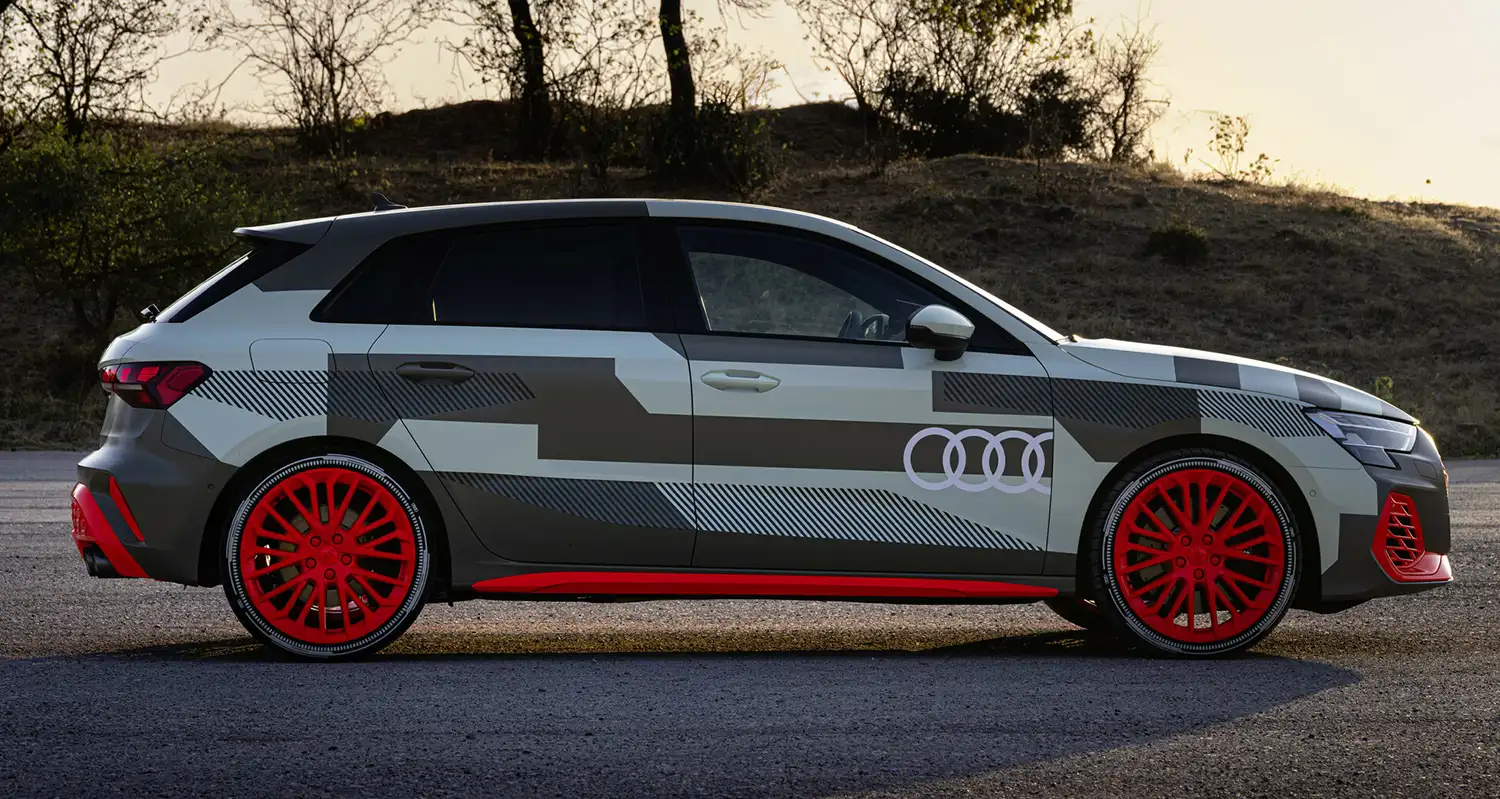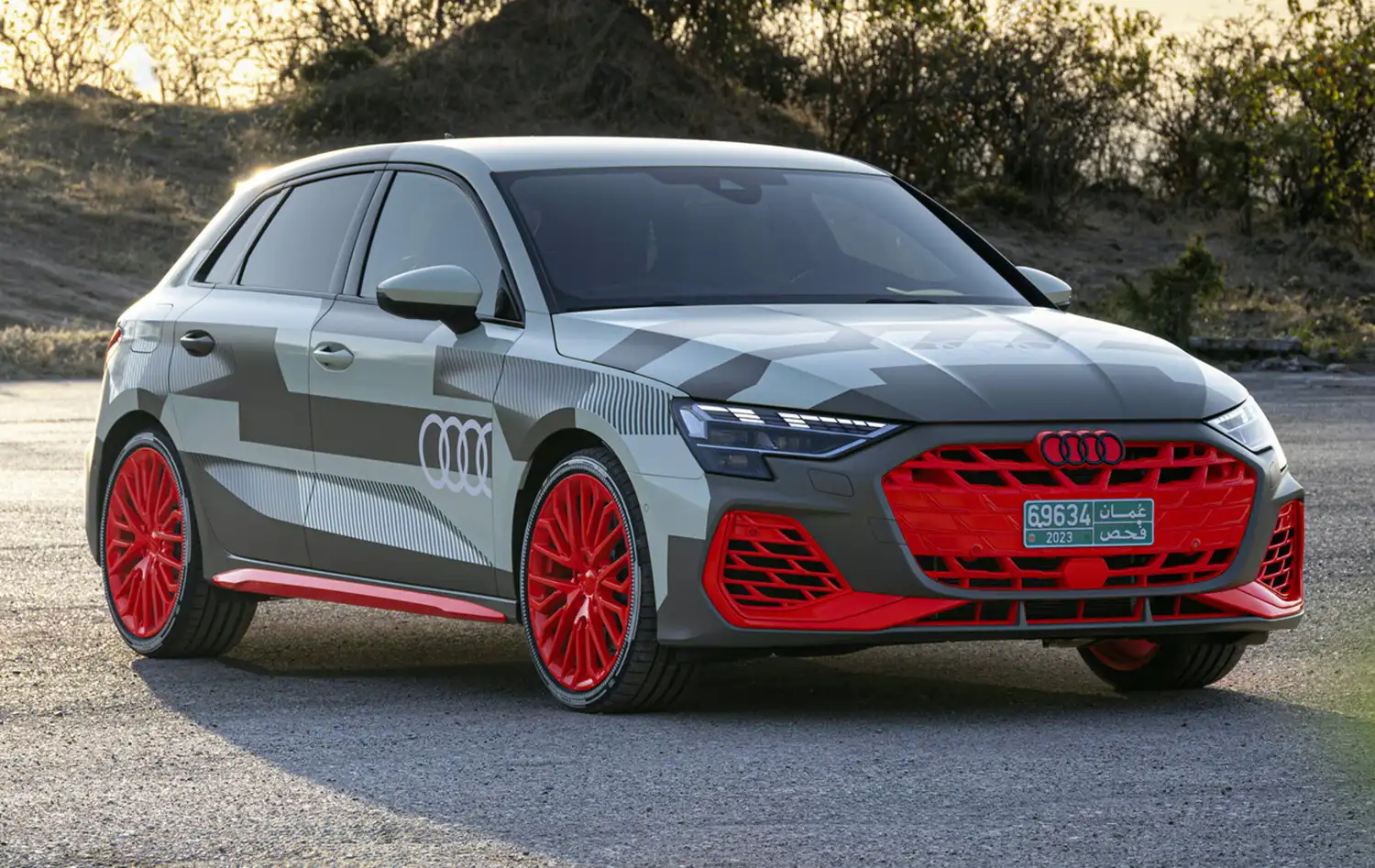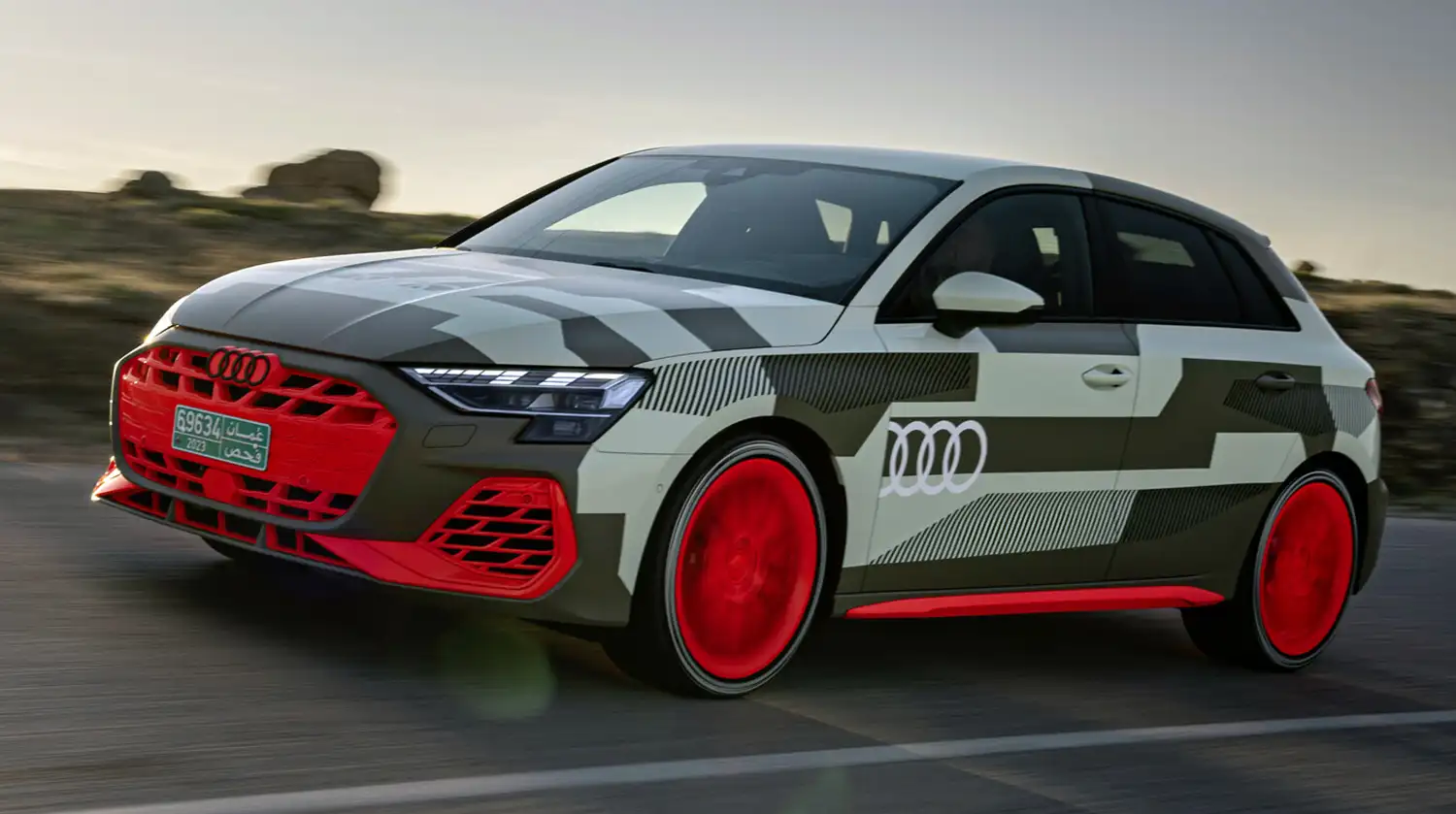
The model upgrade for the Audi A3, including the sporty S model, will arrive at dealerships in the second quarter of 2024. An first test on the challenging curves and steep mountain passages around Salalah in Oman reveals what the future production model is capable of. Still shrouded by its exterior wrap, the Audi S3 prototype offers a preview of the increased driving dynamics resulting from many innovations. In the following, we offer a glimpse into the technology behind them. Read the top ten list to discover the measures that will take the compact sports car to a new level and guarantee an emotional driving experience:
1 – More power: With 245 kW (333 PS) and 420 Nm of torque, the 2.0 TFSI four-cylinder engine in the sporty compact model is more powerful than ever. The engine receives an increased output of 23 PS and 20 Nm more torque. Confident pulling power and powerful acceleration are the result. The maximum torque is available across a wide range of 2,100 to 5,500 rpm. The compact model accelerates from 0 to 100 km/h (62 mph) in 4.7 seconds.
2 – Optimized engine tuning: The preloaded turbocharger ensures a more spontaneous power delivery of the 2.0 TFSI. When at a steady speed and at low to medium acceleration in the part-load range, the turbocharger keeps at a constant rpm. In addition, the throttle valve, which is open during overrun phases, improves performance. The further and longer it opens, the faster the torque builds up, resulting in further improved engine response. This can be experienced impressively in dynamic mode and in the new dynamic plus profile.
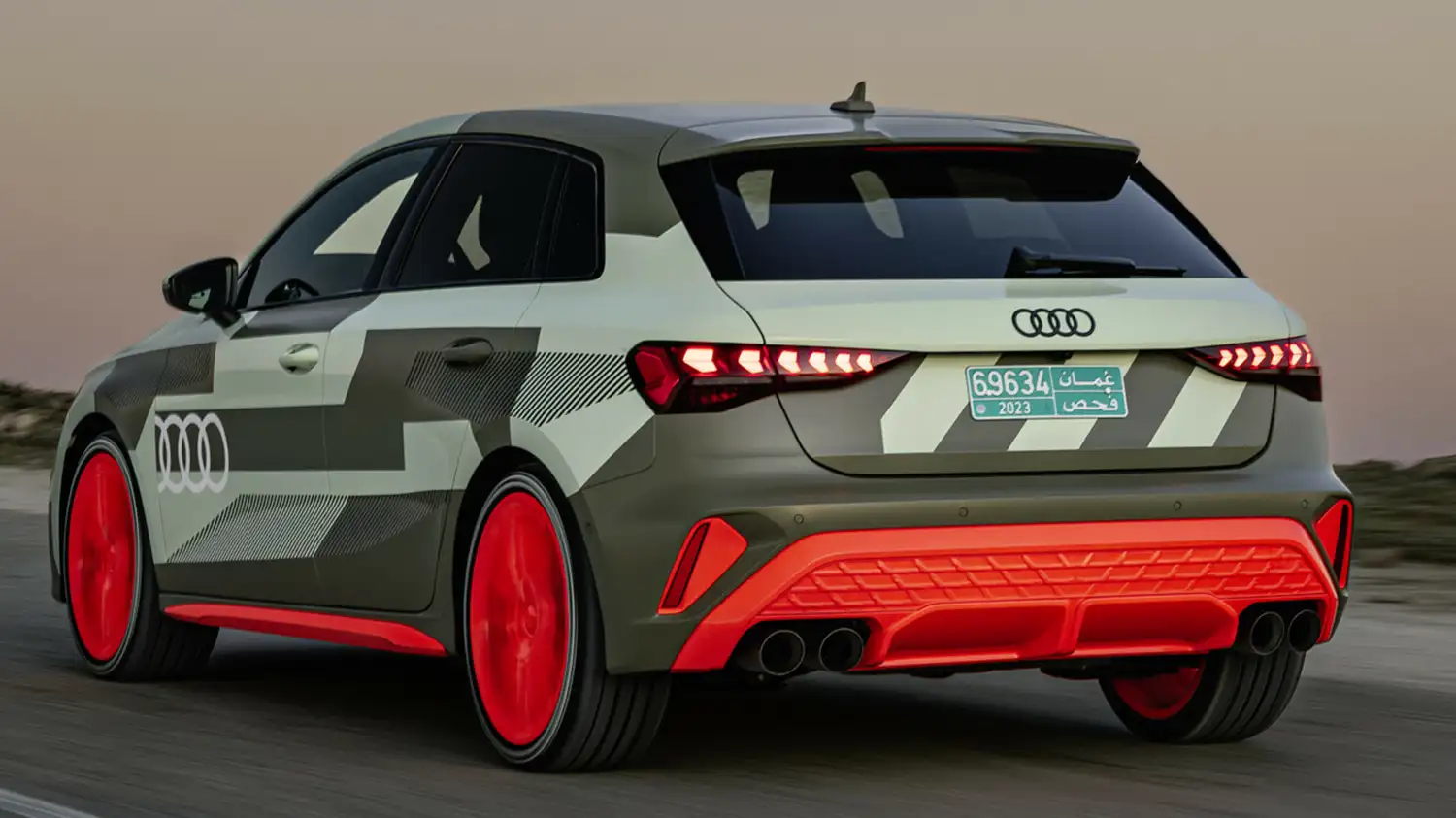
3 – Sportier transmission setup: With its higher starting torque, the seven-speed S tronic now enables more spontaneous launches off-the-line. This is achieved by compressing the clutch pack of the respective clutch more strongly. In addition, the shift time for gearshifts under full load has been halved and engine speeds are increased under partial load when the transmission is set to D. The result of these measures is very good responsiveness.
4 – Torque splitter: Like the Audi RS 3, the S model now features the torque splitter, which increases agility and stability. This technology enables active, fully variable torque distribution between the rear wheels. The torque splitter uses an electronically controlled multiple disk clutch on each drive shaft to optimally distribute the torque between the rear wheel on the inside and the outside of the curve – depending on the driving situation and the chosen Audi drive select mode.
5 – New Audi drive select mode: Six different profiles enable a wide range of driving experiences – from an emphasis on comfort to extremely dynamic. With the new dynamic plus mode, the S3 prototype demonstrates a high level of agility. The torque splitter sends as much drive torque as possible to the rear axle and the rear wheel on the outside of the curve, resulting in a tendency to oversteer. The electronic stabilization control (ESC) is automatically active in sport mode. Modest interventions by the ESC system ensure an increased and even more emotional driving experience on surfaces with different friction coefficients. The engine and transmission have also been tuned specifically for the dynamic plus mode. Compared to the dynamic mode, the idle speed of the 2.0 TFSI has increased by 200 rpm to 1,300 rpm to improve off-the-line performance further. The throttle response is even more direct. In addition to shorter gearshifts, the transmission also contributes to increased dynamics with later upshifts and earlier downshifts.
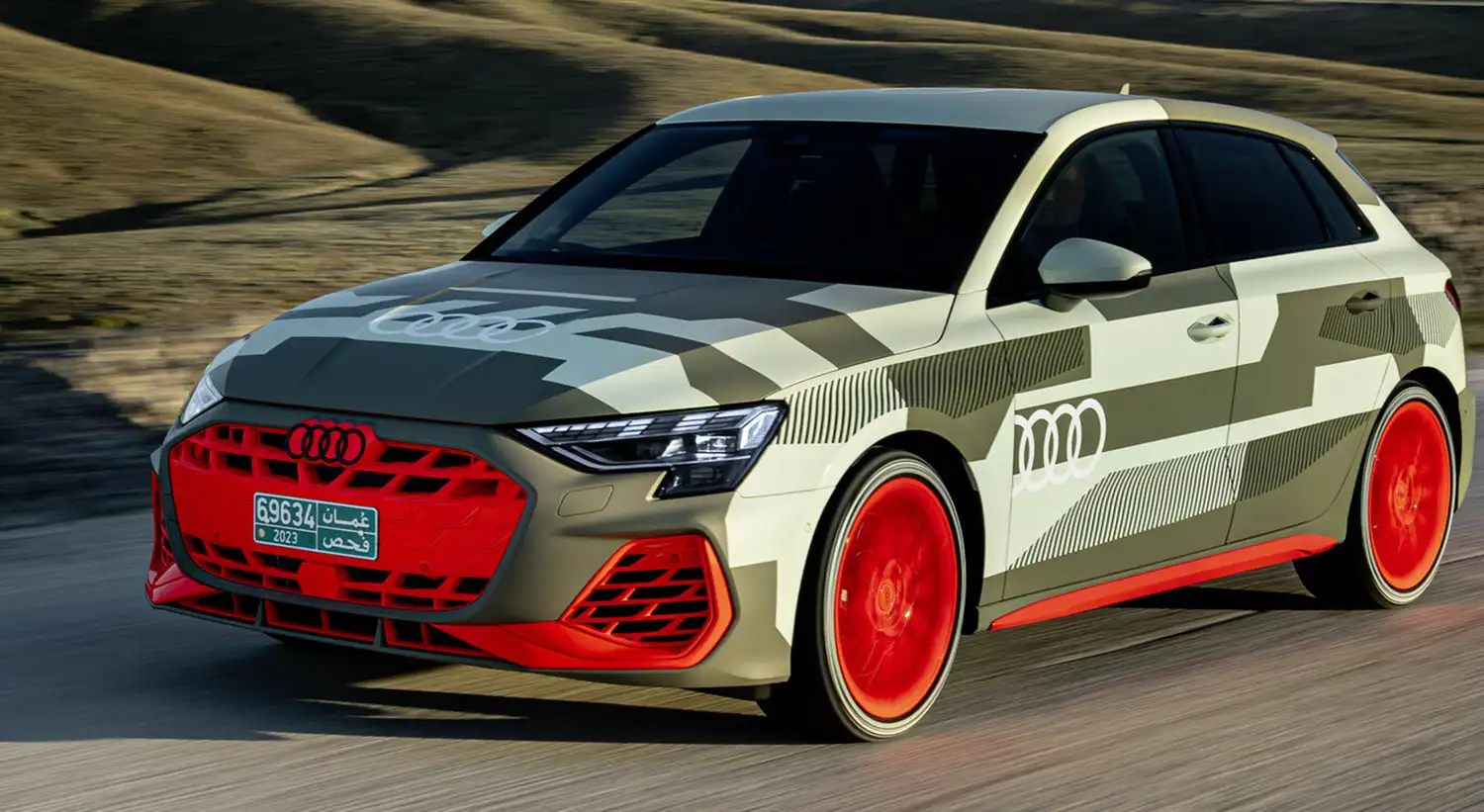
6 – Sportier front axle: A McPherson strut axle with a new steering knuckle is fitted at the front, which enables a larger negative wheel camber. Compared to the predecessor model, the camber at the front has more than doubled. This increased tilt towards the road surface, i.e., the greater angle between the wheel plane and the vertical improves steering response in addition to higher lateral control, i.e., more grip and dynamics when cornering. In conjunction with the stiffer control arms, this makes the compact sports car even more agile.
7 – Optimized progressive steering: The progressive steering has the advantage of an angle-dependent ratio, meaning that the more the driver turns in, the more direct it becomes. In order to achieve an improved steering feel, the steering characteristics have been adjusted. Especially in the middle position, the steering is more centered, improving precision and feedback for overall better handling.
8 – More powerful brakes: Increased driving dynamics also mean increased demand on the brakes. For this reason, the front axle now uses larger ventilated discs. The 18-inch steel brake measures 357 mm in diameter and, at 34 mm, is four millimeters thicker than before. The twin-piston brake calipers at the front are another new feature. They further improve braking performance, as do larger pads and larger friction surface of the disks, which have a significantly higher thermal and thus also a higher load capacity.

9 – Higher performance tires: Two new 19” 235/35 tires are ideal for putting all this power to the road: performance tires featuring optimized dry handling as well as improved braking performance, and dedicated sport tires. The tires offer remarkably high grip and precise track stability, especially on dry roads. In addition, the label D tires feature exact handling across the entire speed range.
10 – Next-generation of electronic stabilization control: All suspension control systems have been specifically tuned for dynamic turn-in response and handling. The wheel-selective torque control – a software function of the electronic stabilization control (ESC), which slightly brakes the two wheels on the inside of the curve during sporty cornering – has been further improved, as have traction and deceleration behavior. The difference in propulsive forces means that the vehicle turns into curves more easily and follows the steering angle more precisely.

